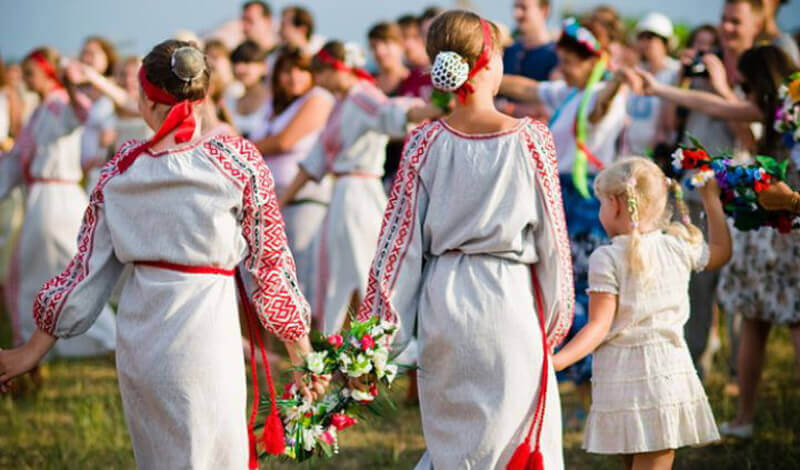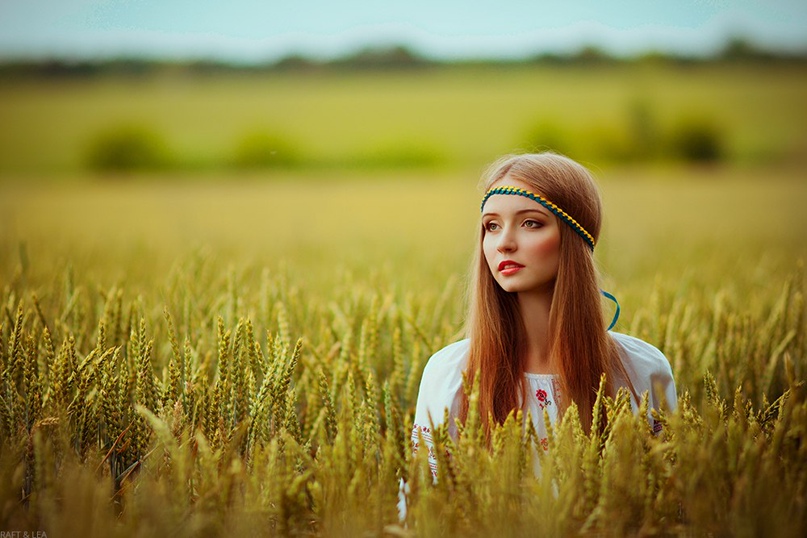How Ukrainian girls perceive and engage in traditions and rituals?
Traditional Ukrainian culture was, and remains, patriarchal. The girl was not supposed to take the initiative in the relationship. She had to take a passive position, drawing attention to herself with the help of beautiful clothes, jewellery, singing, etc.
The life stages of a person were very clearly marked. The status and role in society had to change upon reaching a certain age. Religion also significantly impacted people's lives, as Ukrainians were predominantly Orthodox Christians.
Important religious festivals in Ukraine
Festivals and holidays occupy a special place in Ukrainian traditions. They diversify and enliven everyday life, providing an opportunity to relax, gain inspiration, and express the elegance of Ukrainian traditions.
Orthodox Christmas
As religion is an essential part of Ukrainian culture, Christmas Eve is an important day celebrated on December 24. Both adults and children look forward to celebrating Christmas. It brings much joy, fun, sweets, peace, peace, and hope for a better future. Only in Ukraine can you experience this holiday as it was a long time ago, in the time of the distant ancestors of the Slavic people.
Epiphany
January 6 marks the important religious holiday of Epiphany. Unlike many other holidays that combine folk and religious traditions, Epiphany is a purely Christian holiday; it came to Ukraine with Christianity. Holy water should be present in every home. The magical abilities of holy water include expelling evil spirits from the house and granting the patient recovery even from incurable diseases.
Orthodox Easter
Easter is one of the brightest spring holidays. Many exciting customs and traditions are associated with this day:
- painted eggs;
- unique pastries - paskas;
- congratulations and religious rituals.
This is a family-oriented holiday, so all family members should gather at the Easter table, which means the family will be together all year round.
Ivana Kupala Day
On the night of July 6-7, the ancient festival of Ivan Kupala is widely celebrated in Ukraine. It has ancient pagan roots. Midsummer's Day is filled with rituals associated with water, fire, and herbs: bonfires, wreaths, and bathing. In many Ukrainian rural areas, the holiday still has its sacred meaning. Folklore has preserved many legends about this special day.
Family concept in Ukrainian culture
Ukrainian culture is highly family-oriented. There were "norms" dictated by society in love affairs. The culture of family life of Ukrainians was traditionally accompanied by various rituals that marked the stages of a person's life:
- family formation;
- birth of a child;
- family anniversaries;
- death of a family member.
Actions, symbols, and songs originating in different historical periods are integrated into the culture of family life. This reflects the characteristic norms and views of Ukrainians who lived in those times.
In the beginning, family rituals were closely connected with magical traditions, which were supposed to ensure happiness, wealth, and fertility to the family and an individual to protect them from evil forces.
With the development of knowledge, magical rituals lost their original meaning, increasingly acquiring an entertaining character. Traditional family rites are related to the biological cycle of human existence — birth, marriage, and death. Many of these rituals have survived our time to some extent.
Marriage rituals in Ukrainian culture
In a traditional Ukrainian wedding, the mother has a priority role. She decided on the issue of her daughter's marriage, met the wedding procession, accompanied the newlyweds to the wedding, and dressed her daughter bride in a wreath.
Ukrainian wedding culture is divided into three cycles of celebration: pre-wedding, wedding, and post-wedding. In turn, each of the cycles consisted of several rituals.
- Pre-wedding rituals included matchmaking, marriage, inspection, wedding, cake running, and bachelorette parties.
- The actual wedding consisted of invitations, gifts, the position of the young, the untying of the braid, the distribution of the bread, the transportation of the dowry, the naming ceremony, and the ceremony.
- The post-wedding culture was devoted to honouring the parents by the young and bringing the daughter-in-law into the husband's family.
The "scenario" of the traditional folk wedding celebration in its main features has been preserved to this day - to a greater extent in the rural areas and a significantly transformed form in cities.
Traditional Ukrainian clothes
The culture of traditional clothes is vibrant and versatile. Women's and men's shirts decorated with embroidery are considered a valuable heritage of Ukrainian culture. These are not just dresses, as the patterns had a sacred meaning.
The culture of embroidery has a rich history and tradition. Embroidered clothes were created by women only. The process of creating each embroidery element was not only tedious work but also a ritual of self-expression for craftswomen.
It was believed that the use of particular signs and the observance of rituals contribute to the fact that ready-made clothes receive positive energy that protects a person.
For example, the charms of wedding shirts were believed to protect the couple from evil (that's why they were saved by wearing them only for big religious holidays).
The tradition of creating vyshyvanky has long-lasting roots. For centuries, girls and young married women gathered during long winter evenings with work and good songs. Craftswomen sewed, spun, and embroidered to decorate their homes with the arrival of spring and prepare new bright clothes. Such parties turned routine daily work into a minor holiday, filling a difficult life with beauty.
When a girl was courted, she always showed embroidered things to demonstrate her hard work.
Many modern fashion designers adopted this traditional dress concept and made it famous again.
Peculiarities of Ukrainian cuisine
When talking about Ukrainian traditions, we must mention the culture of cuisine. Ukrainian cuisine is another heritage of this country.
The traditional food is not dietary. Since Ukrainians have always worked hard, they have had to eat high-calorie foods. Ukrainian cuisine combines a variety of ingredients in comparison with European cuisine, which is usually prepared from vegetable or meat products.
Women cooked the food. And it still is regarded as predominantly women's duty.
Culinary symbol of the country
Almost every Ukrainian will call borscht a symbol of Ukraine. Red, rich soup is very aromatic and tasty. Ukrainians have been preparing this first dish for centuries, but it's Ukrainian roots were officially recognized recently. In July 2022, UNESCO added borscht to the list of intangible cultural heritage.
Bread is of high value
The culture of honouring bread is widespread throughout the country. Since the ancestors of modern Ukrainians were farmers, they honoured the cult of land and bread. More than ten bread recipes are uniquely Ukrainian, and rye bread has become an object of Ukraine's heritage. Pampushki, palyanitsa, and kalach (pastry) are authentic Ukrainian dishes.
Ukrainians prepare many dishes from grain, some of which are sacred. For example, kutya, which is made for Christmas. These are boiled grains of wheat or barley with honey. Another example is paska, which is Easter sweet bread.
Dishes that embody the traditions of Ukraine
Ukrainian cuisine is usually associated with varenyky, lard, dyruny (potato pancakes), and gorilka. These dishes have a place on the traditional table but are not limited to them.
Ukrainian cuisine is also known for Kyiv-style cutlet, sweet cheesecakes, or cabbage rolls. Potatoes are also a very popular vegetable. After its appearance in Ukraine in the 18th century, Ukrainians started using it in many dishes, including dyruny. Before the arrival of potatoes, Ukrainians consumed turnips and garlic, onions, cucumbers, beets, and cabbage, which we still love today.
Ukrainian cuisine has unique spices: mustard, wormwood, rue, and nettle. They were used before the appearance of foreign spices.
Traditional Drinks for Ukraine
One of the most famous and delicious alcoholic drinks known since the time of Kyivan Rus is medovukha (honey drink). It consists of fermented honey and water. Wine was also consumed: traces of the first productions, dating back to the 4th century BC, were found in the Crimea. However, wine is a uniquely Ukrainian drink. It was brought by the Greeks, who had colonies in southern Ukraine. Gorilka is another famous strong-spirit drink that is traditional to Ukrainians.






















